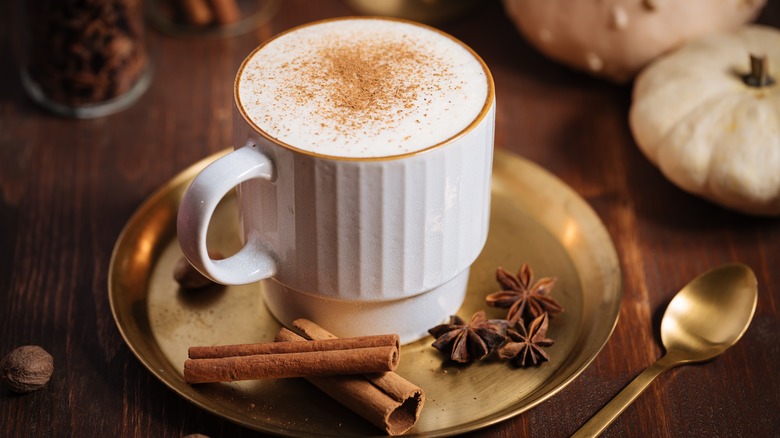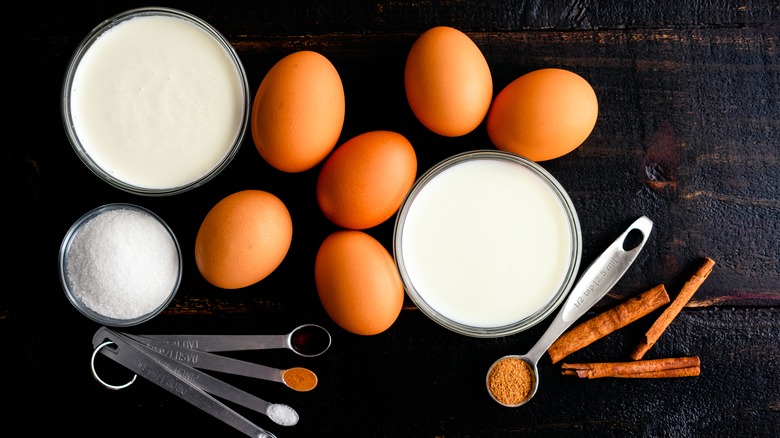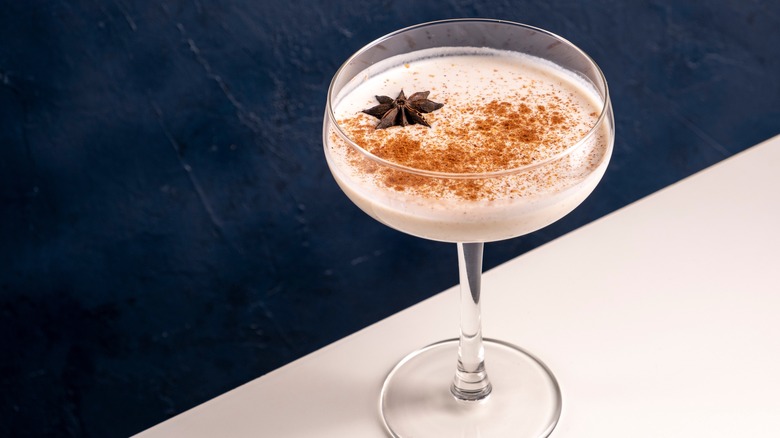Why You Should Start Making Aged Eggnog For The Holidays
When it comes to beverages associated with the winter holidays, eggnog often comes to mind. This traditional and rich holiday beverage has been enjoyed for centuries. It is a creamy concoction made from a blend of milk or cream, eggs, and sugar, and is often spiked with spirits like rum, brandy, or bourbon. This indulgent drink is typically garnished with a sprinkle of nutmeg, adding a warm and festive touch to its appearance and flavor. Alton Brown even breaks down how eggnog could be used to treat a hangover (when made sans alcohol).
While most of us have had eggnog at one time or another, few people know about its aged sibling. While it takes time to prepare and patience to wait while it ages in your fridge, aged eggnog devotees sing its praises, noting the transformation of flavor that aging gives to the drink's character. However, if you want to enjoy a well-aged eggnog this holiday season, you better start now, as the longer it ages, the better it gets.
History of eggnog
The history of eggnog can be traced back to 13th century England, during which monks were known to indulge in a drink called posset – a hot milk-based beverage with eggs — figs, and ale. By the 17th century, sherry became the primary alcoholic ingredient in the punch, and it was seen as a drink for the upper class because eggs and milk were luxury foods at the time. In the 18th century, eggnog found its way to America where it became synonymous with holiday celebrations and winter festivities. In fact, George Washington served eggnog at his holiday parties held at Mount Vernon. The drink's popularity spread due to the lower cost of milk and eggs, and Caribbean rum eventually replaced expensive brandies and fortified wine from Europe, and the modern form of eggnog was born.
Meanwhile, the origin of aging eggnog is a bit less certain, with at least three different claimants to fame. Among them was the late Dr. Rebecca Lancefield, a microbiologist who was a researcher at the Rockefeller Institute, who introduced her aged eggnog to her colleagues. A controlled study to examine the possibility of bacterial growth in the doctor's aged eggnog shows that it is actually safer to consume than freshly made ones, primarily due to the antibacterial properties of alcohol.
Making and aging eggnog
To make an eggnog that is suitable for aging, combine eggs and sugar in a bowl until the sugar is dissolved. Slowly add dark rum, brandy, and bourbon (or other combinations of dark liquor of your choice) to the egg and sugar mixture until well combined. If you add the alcohol too quickly, the eggs will curdle. Add whole milk, half and half, heavy cream, and a pinch of salt, and season with nutmeg.
Pour the mixture into sanitized glass bottles or mason jars, using a strainer to filter out any curdled egg pieces. Seal the containers tightly and place them in the back of the fridge for a minimum of two weeks for the flavors to mature. From time to time, turn and gently shake the containers to mix their contents. Serve the drink in a mug with extra grated nutmeg and whipped cream for a smooth and complex holiday treat. Trust us — you will never go back to premade eggnog after a glass of the homemade stuff.



